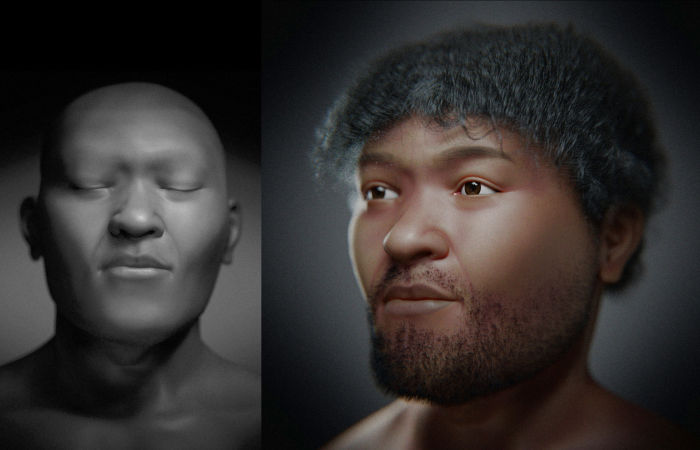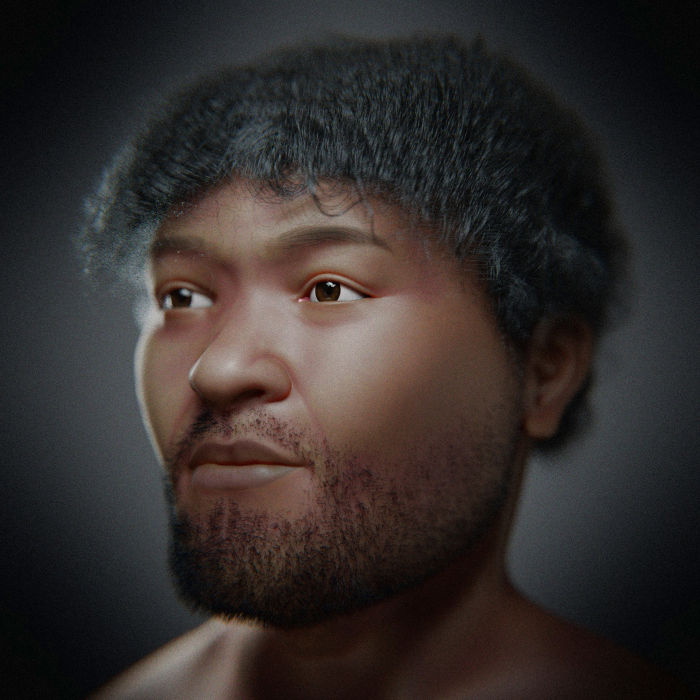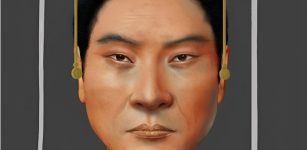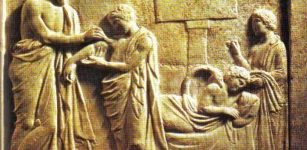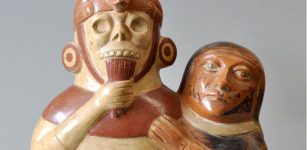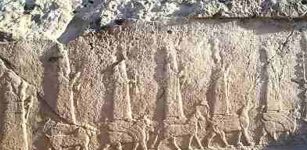Face Of Egyptian Man Who Lived 35,000 Years Ago Reconstructed
Jan Bartek - AncientPages.com - Scientists have reconstructed the face of a man who lived 35,000 years ago in Egypt. His remains, an almost complete skeleton, with the exception of the distal parts of the feet and hands, were found at the Nazlet Khater 2 (NK2) site, located in the Nile Valley in 1980. At the site, archaeologists also found a stone ax.
Anthropological analyses of the skeleton showed that it was a male individual, between 17-20 years old (or 20-29), between 161-165 cm tall, suggestive of African ancestry (negroid), and cranial capacity of 1400 cm³. In general terms, the skull was considered modern, but it has some elements documented as archaic.
The man lived 35,000 years ago in Egypt. Credit: Moacir Elias Santos and Cícero Moraes
Predating the first known Pharaoh by 32 millennia, it is difficult to say who this man was or what kind of society he lived in, but he is the oldest known Homo sapiens skeleton in Egypt.
Brazilian scientists have now made a facial approximation of the skull of Nazlet Khater 2, allowing us to meet the man from the distant past.
In their study, the research team explained they relied on a method known as photogrammetry to digitally recreate what this ancient man might have looked like.
"By piecing together detailed images of the skeleton, scientists created two composite images: one black-and-white image in a neutral state and another in a more life-like rendering with facial hair and curly locks. The researchers discovered that the skull itself had a mostly modern structure, though the jaw was much more robust than what’s typically found in modern Homo sapiens, a possible genetic leftover from our Great Ape ancestors.
The practice of photogrammetry in archaeology is decades old, but recent technological developments have made the technique more affordable, ubiquitous, and accurate. At its most basic, photogrammetry creates 3D renderings from 2D images and uses feature matching to capture an artifact, burial site, or (in this case) a skull from every angle," Popular Mechanics reports.
Facial approximation with more objective elements. Credit: Moacir Elias Santos and Cícero Moraes
"Two approaches related to facial approximation were worked on, one more objective and scientific and the other more subjective and artistic.
The scientific approach consisted of a bust equipped with elements closely linked to the statistical aspects of the approximation and since the initial stage of the process was composed only of data collected from CT scans and measurements of living individuals and a compatible population, it was possible to generate an anatomically coherent and, to reduce the incompatibility in the orbit region, images were rendered with eyes closed, as well as to avoid speculations about the skin tone, without hair and hair, since there is no information about the configuration of these structures and the color chosen was grayscale, avoiding skin tone information.
Facial approximation with elements the addition of subjective elements. Credit: Moacir Elias Santos and Cícero Moraes
The more artistic approach consists of a color image, with eyes open, with a beard and hair. Although it contains speculative elements about the individual's appearance, as it is a work that will be presented to the general public, it provides the necessary elements for a complete humanization, very difficult to achieve only with exposure of the skull and deficient in the objective image in grayscale with eyes closed.
Furthermore, the configuration is consistent with anthropological analyzes carried out on the skull, suggestive of African (Negroid) ancestry," the study informs.
As explained by Popular Mechanics, "the Brazilian scientists admit that their digital recreation is only an approximation, but the because of the sheer age of the skeleton (dating back to the tail end of the Paleolithic era), this facial facsimile not only puts a face to a little-known era of human history, but also helps scientists understand an important chapter in human evolution."
Written by Jan Bartek - AncientPages.com Staff Writer

